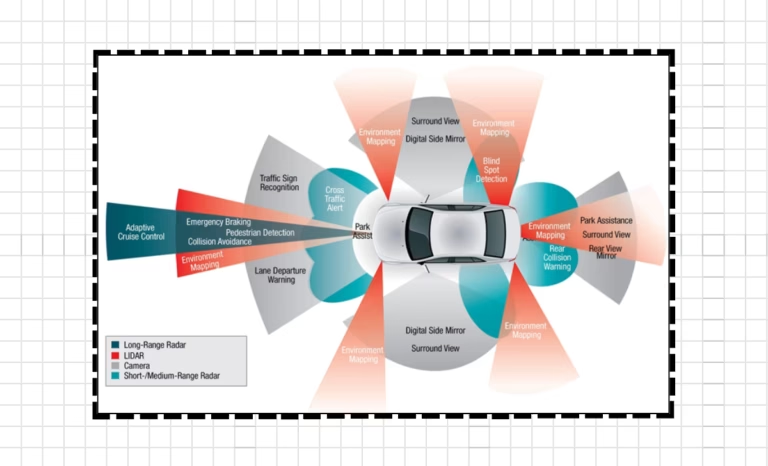In the near future, in 2023, the Indian auto sector is anticipated to experience significant growth. The Indian Auto Expo has returned after being postponed earlier this year due to difficulties brought on by the COVID-19 pandemic. More significantly, a large number of new cars will be introduced in 2023, including both those powered by internal combustion engines and those with electric motors. And a good number of them will be present at the 2023 Auto Expo. Even though the list is lengthy, we have included our top car picks for vehicles that will be introduced in 2023 below.
In this article
In this article
New SUV Cars coming out in 2023
Without a doubt, the most well-liked form factor is the SUV, not only in India but also internationally. The fact that SUVs are popular in India is due to their excellent driving positions and usefulness. They are an excellent option for city and long-distance use because of their ground clearance, which is useful given the imperfect roads we have. Here is a list of every new SUV coming to the market in the coming year, starting with the three-row Citroen C3 hatchback and ending with the Bentley Bentayga EWB.
Citroen C3 7-seater
A seven-seater C3 crossover being tested by Citroen has been sighted on the road. It will presumably have larger wheels (16 inches) than the normal C3 and more durable body armor. It may be known as the C3 Aircross, C3 Plus, or C3 Sport Tourer. It might compete directly with the Renault Triber and offer a less expensive option to the Kia Carens, Maruti Suzuki Ertiga, and XL6.
Up until the B-pillar, the C3 Aircross looks much like the conventional C3. The back overhang on the seven-seater variant appears to be longer, indicating that it may be longer than four meters. For the seven-seater C3, the rear quarter panel and glass section also appear to be new. Even internally, it is laid out similarly, but because the C3 Aircross will be higher, it might come with extra features as standard.
It is anticipated that the powerplant will be the same as the one found in the conventional C3: a 1.2-liter turbocharged gasoline engine paired with a 6-speed transmission. Citroen might alternatively equip the C3 Aircross with a 1.2-liter normally aspirated petrol engine to lower the price.
Force Motors Gurkha 5-Door
Most parts between the three-door and five-door Force Gurkhas will be interchangeable. The SUV’s five-door model is anticipated to offer a variety of seating arrangements, including captain’s chairs or a bench for the second row and jump seats or captain’s chairs for the third.
The upgraded C in C chassis with a 400mm longer wheelbase from the three-door variant will probably be used by the five-door Gurkha. Additionally, the 2.6-liter diesel engine paired with a 5-speed transmission from Mercedes will remain. It is anticipated to have locking differentials, a low-range transmission, and 4X4 and 4X2 versions.
BMW X1
The new X1 features thin headlights with L-shaped LED Daytime Running Lamps surrounded by massive, chrome-heavy kidney grilles. It has flush door handles and larger wheel arches in the profile. The X1’s interior is equipped with a 10.7-inch touchscreen entertainment system that utilizes BMW’s brand-new iDrive 8 operating system, and the driver receives a 10.25-inch digital instrument cluster. The X1 has a somewhat larger cabin than its predecessor thanks to a wheelbase that is 22 millimeters longer and a track that is 31 millimeters wider. According to claims, the new seats provide improved long-distance comfort.
It has a choice of two diesel and petrol engines, each with 48V mild hybrid technology, and a 7-speed dual-clutch automatic transmission with an electric starter motor. While the 218 horsepower xDrive23i and 211 horsepower xDrive23d variants receive an all-wheel-drive system, the 136 horsepower sDrive18i and 150 horsepower sDrive18d variants come standard with a front-wheel-drive system.
Bentley Bentayga EWB
Bentley’s flagship model is currently the Bentayga EWB (Extended Wheelbase), after the Mulsanne was phased out in 2020. The back seat occupants receive all the additional room provided by the EWB’s 180mm length over the basic variant.
Globally, the Bentayga EWB currently only has a 4.0-liter twin-turbo V8 with 550 horsepower and 770 Nm of torque. It has a peak speed of 290 kph and can accelerate from 0 to 100 kph in 4.6 seconds. For the rear passengers, the Bentayga EWB has three seating options: a two-seat layout, a three-person bench configuration, and a combination of both known as the ‘4+1’ configuration. Despite the extended wheelbase, it will not be available with seven seats.
Kia Seltos facelift
A new bonnet and set of headlights will be added to the Seltos makeover. The rear receives the most updates with a new tail-lamp design, updated bumper, and fake skid plate. It also receives new alloy wheels.
The Seltos’ interior will have new upholstery, a visual overhaul of the dashboard, and a few new features, including an ADAS system that has been customized for India. Kia will also include a new infotainment system with an updated air conditioning control panel. The Seltos will continue to be powered by the available engines and transmissions.
Land Rover Defender 130
Due to the Defender 130s 340mm length increase behind the rear axle, there is more room in the boot. It has five seats as usual, but an additional two-three-three seating arrangement allows for a maximum capacity of eight. Inside, the Defender 130 resembles previous Defender models quite a bit. It now has a bigger 11.4-inch curved touchscreen and various trim choices, such as tan leather seats and an oak veneer.
Coil springs are normal on base model Defenders, but the Defender 130 has an adaptable air suspension that allows for up to 430mm of movement and a maximum wading depth of 900mm. The Defender 130 will be available in India with a 3.0-liter, 400-horsepower petrol engine and a 3.0-liter, 300-horsepower diesel engine.
Maruti Suzuki Jimny
The wheelbase of the five-door Jimny will be 300mm longer than that of the three-door model. Despite being 3,850mm longer than the new Brezza, it will be shorter. Since it has a 1.5-liter gasoline engine, it is ineligible for the reduced excise rate for vehicles under 4 meters. It will make its debut in India initially before becoming available in other regions. The three-door Jimny is already produced by Maruti Suzuki in India in both left- and right-hand drive configurations, but solely for export.
The Jimny’s 1.5-liter petrol engine is anticipated to be mildly hybrid and coupled to either a 5-speed manual or a 6-speed automatic transmission. Additionally, the Jimny will be equipped with the extreme Suzuki AllGrip Pro all-wheel drive system, which has a low-ratio gearbox.
Hyundai Creta facelift
Major visual modifications and interior upgrades will be part of the popular SUV from Hyundai’s mid-life revamp. Hyundai’s new “parametric grille” and LED Daytime Running Lamps that extend to the edges of the car give it a front look that is influenced by the Tucson. New, more angular lights and a reprofiled boot lid are added to the back.
Inside, there won’t be many changes because the fundamental structure and style should stay the same. The Alcazar’s 10.25-inch digital cluster and the Tucson’s ADAS technology are two significant updates. The redesigned Creta is anticipated to retain the present gasoline and diesel powertrains in addition to the available gearboxes under the hood.
Lexus RX
The wheelbase of the BMW X5 competitor has been extended by 6 millimetres, while the roofline has been lowered by 10 millimetres. The appearance of the car is based on Lexus’ Next Chapter design language. A 14-inch touchscreen, wireless charging, and wireless Apple CarPlay are all included on the RX.
It only receives wired Android Auto connectivity, though. For the upholstery, Lexus used vegan synthetic leather. India will get the RX 350h model, which has a 2.5-liter powerful hybrid engine with 250 horsepower and an 18.1-kWh battery.
Maruti Suzuki YTB
The cross-hatchback coupe SUV, codenamed YTB, is based on the Baleno. With split headlamps and a coupe-like roofline, the coupe SUV’s front fascia appears to be comparable to the Grand Vitara from the outside. With the exception of its elevated suspension and substantial wheel arches, it is anticipated to be smaller than the Brezza. The 1.0-liter turbo-petrol engine, which was first used in the Baleno RS, is anticipated to be installed in the YTB coupe SUV and to have mild hybrid technology.
MG Hector facelift
The updated Hector features a new front end with a diamond mesh grille that is “inspired by the Argyle” and has prominent chrome surrounds, as well as new bumpers and headlights. The installation of the new 14-inch touchscreen entertainment system will be the largest interior alteration. The centre console has a flowing appearance, and the dashboard has new horizontal AC vents.
Like its stablemates, the revised Hector will also have ADAS technology, with the sensors and cameras most likely mounted on the windscreen. Two 1.5-liter petrol engines with 143 horsepower, one of which is somewhat hybrid, and a 2.0-liter turbodiesel engine with 170 horsepower are anticipated to remain.
Nissan X-Trail
The first two generations of the Nissan X-Trail were sold in India; the third model, although being previewed a few years ago, was never made accessible. A 5-star Euro NCAP rating was also given to the most recent generation. The front grille of the Kicks and the fourth-generation X-Trail, which will be sold in India, are identical. However, the grille of the X-Trail is surrounded by split headlights.
It is constructed on the CMF-C platform developed by Renault-Nissan and comes in five- and seven-seat configurations. On the interior, it features a 12.3-inch touchscreen, a 12.3-inch digital instrument cluster, ADAS technology, and a 360-degree camera.
Nissan will offer the X-Trail with either a 1.5-litre turbo-petrol with mild-hybrid technology or a 1.5-litre e-Power engine with a range extender hybrid technology. The latter is essentially an EV as the wheels are solely powered by an electric motor and the engine acts as a generator to charge the batteries.
Also Read:
New EV’s cars will be available in 2023
Electric vehicles are popular all throughout the world, including India. EVs are widely seen as the future of the automobile industry, owing to their lower environmental impact compared to internal combustion-engined vehicles. Range anxiety is real, but many manufacturers are addressing the issue by selling electric cars and SUVs with long ranges. We’ve compiled a list of all the EVs that will be available in India next year, from the MG Air EV to the Volvo EX90.
Audi Q8 e-Tron
Audi has updated the e-tron and e-tron Sportback, which are now known as the Q8. The majority of the design is carried over from previous versions, but the revised EVs get a new front grille, reworked bumpers, and refreshed LED head- and tail lights.
Inside, Audi will utilize recycled upholstery in the slightly redesigned cabin, as well as the new multimedia interface (MMI), features such as MMI Navigation plus, which includes an e-tron route planner as standard. Both include a 10.1-inch touchscreen at the top and an 8.6-inch panel at the bottom that controls the climatic features.
The Q8 e-tron models are still offered in two global variations—the 50 and 55—each of which has a twin-motor setup—one on each axle. The range can be extended by up to 100 kilometers thanks to the new, more effective battery. The 89kWh battery in the 50 variants has a range of up to 505 km, and the 104kWh battery in the 55 variants has a range of up to 600 km.
Citroen EC3
The electric Citroen C3 will be based on the ICE-powered Citroen C3, with the only alterations being a charging port on the front fender and a driving controller instead of a gear lever.
With the e-C3, Citroen will supply purchasers with a 3.3kW onboard AC charger, as well as CCS2 rapid charging capabilities. It will also have additional features than the C3, including as cruise control, rear wiper and washer, and automatic climate control.
Hyundai Ioniq 5
The Hyundai Ioniq 5 will become the company’s flagship model. The base is shared with Kia EV6, although unlike the EV6, which is imported as a CBU, the Ioniq 5 would be manufactured in India.
While it is available in 58kW & 77.4kW battery packs globally, India will receive its 72.2kWh battery pack with yields 631km (ARAI-claimed) and will only be available in genuine wheel drive configuration. The power and torque statistics for the India-spec vehicle are 217hp and 350Nm, respectively. Because it will be built locally, it Ioniq 5 will very certainly be less than the EV6. It is likely to cost less than Rs 50 lakh.
Mahindra XUV400 EV
The XUV400’s design is based on the eXUV300 concept shown at the 2020 Auto Show. The EV looks identical to its ICE sibling because it is built on the XUV300, but it can be distinguished by the now closed-off grille, arrowhead-shaped inserts, and copper-colored accents all around.
The key difference is that, unlike the XUV300, which must stay below the 4-meter threshold to qualify for a reduced tax category, the EV has no such limitation and consequently measures 4.2m, giving it 121 liters more boot space.
The interior is all-black with copper accents, the most noticeable modification is just the drive selector which replaces the usual gear lever. The 7.0-inch touchscreen has now been kept, but it is now powered by Mahindra’s AdrenoX software.
The EV is powered by a 150hp, 310Nm electric motor and a 39.4kWh battery pack with a MIDC-rated range up to 456km. It can sprint from 0 to 100kph in 8.3 seconds and reach a top speed of 150kph.
MG Motor Air EV
This Wuling Air EV, which is already offered in some regions, including Indonesia, will serve as the foundation for the small two-door urban runabout EV. With a wheelbase of 2,010mm and a height of 2.9 meters, the Air EV is 400mm shorter than Maruti Suzuki Alto. The Bajaj Qute, which is categorized as a quadricycle, is the only item that is smaller.
The battery pack that MG will likely offer has a capacity of 20 to 25 kWh and should have a range of 200 to 300 km. It is anticipated to be driven by a single front-axle motor with a 68 horsepower power output. With the Air EV, MG hopes to alter consumers’ opinions about compact hatchbacks because it has characteristics often found in vehicles from several segments above. The Air EV won’t be a low-cost vehicle because of its feature set and electric drivetrain.
Mini EV
The next generation Mini EV will be constructed by BMW’s Chinese partnership with Great Wall Motors and will include both a three-door and a convertible vehicle. It will be 40mm larger than current model, which will aid boost back room and allow for a substantially larger battery. This will also be the first time since the return of the Mini in 2001 that the next generation would be smaller than the previous one.
The next-generation Mini EV will not include typical Mini style, like the clamshell bonnet that is present on every Mini since 2001. Despite the fact that the Mini EV & Mini ICE are built on separate platforms, both will have a relaxed, uncluttered interior.
Skoda Enyaq IV
India will get the Enyaq iV as a CBU. We are most likely to get the top-tier 80x powertrain, which has a range of up to 513km and an 82kWh battery that enables 125kW DC fast charging. It includes an all-wheel-drive system and two electric motors, one on each axle, with a combined output of 265 horsepower. Skoda may potentially sell the Enyaq iV in lower-end, two-wheel drive versions for less money.
The Enyaq iV, according to Skoda, has a drag coefficient of 0.27, which really is low for an SUV and increases range. The range of the 80 iV and 80x iV models, which share the same battery, is up to 510 km and 460 km, respectively. The Enyaq iV is a five-seater SUV has two rows of seats, and it is only somewhat smaller than the Kodiaq (4,648mm length and 1,877mm wide).
Volvo EX90
The EX90 is Volvo’s third electric vehicle, but it’s the first to employ the company’s brand-new SPA2 platform, a skateboard-style construction that increases interior flexibility. With a strong emphasis on both hardware and software safety systems like cameras and radars which are connected to the car’s internal computers, Volvo believes that the EX90 is the safest vehicle it has ever produced.
The EX90 receives the recognizable Thor’s hammer headlights from Volvo, which include T-shaped LED lighting. The EX90 resembles the XC90 in appearance, with flush door handles and a large glasshouse. It has an unusual pair of split lamps at the back that have a C-shaped LED unit below and a pixelated pattern above.
The twin-motor, all-wheel drive powertrain featuring two output levels will be the first option for the EX90. The lowest one will generate 408 horsepower and 770 pound-feet of torque, while the higher “Performance” versions generate 517 horsepower and 910 pound-feet. Both have a top speed cap of 180 kph. Later will come models with just one motor. The e-motors are connected to a 111 kWh battery with a 600 km range (WLTP cycle).
Volkswagen ID.4
Volkswagen has announced that it is testing the MEB-based ID.4 electric vehicle in India, which will be the company’s first EV there. The high-performance ID.4 GTX vehicles, which have one engine on each axle at the front and back, are most likely to arrive in India. The motors’ combined output is 299 horsepower and 460 Nm of torque. It can sprint from 0 to 100 kph in 6.2 seconds and has a peak speed cap of 180 kph.
The inside of the ID.4 electric crossover would be essentially ‘animal-free,’ with all upholstery save the steering wheel made of man-made materials. The ID.4 has a smaller footprint than that of the Tiguan Allspace, but more cabin space due to the absence of a central tunnel as well as a long wheelbase.
new performance cars launching in 2023
While the performance automobile sector is small in our market, it offers the most exhilarating and exciting cars. In 2023, we will see a swarm of new performance vehicles arrive in our market, including the Lamborghini Huracan Sterrato, Maserati MC20, Ferrari Purosangue, and Skoda Octavia iV RS. We’ve compiled a list of all the hot new cars and SUVs that will be available in India during the coming year.
Ferrari Purosangue
The Italian automaker’s first “four-door, four-seat vehicle” is the first SUV from Ferrari. The front-mid engine position and rear-mounted transmission of the Purosangue are reminiscent of sports cars. Similar to previous Ferrari models, it has split headlamps with air vents to help with aerodynamics on the margins of the bonnet.
The rear doors of the Purosangue have a rear hinge and can open up to 73 degrees. The four-seater has two separate rear seats that are positioned in a dynamic manner. Although there isn’t much room in the rear, the optional electrochromic glass roof creates an airy feeling. The dashboard has a twin-pod design, with a separate display for the passenger. Although the driver has a decent perspective of the road ahead from the seat, it is not so high that the driver towers over other drivers.
The Ferrari Purosangue’s engine, a 6.5-liter V12 with 725 horsepower and 716 pound-feet of torque, is connected to an 8-speed dual-clutch automatic transmission and a 2-speed front power transmission.
Ferrari has temporarily stopped accepting orders for the Purosangue due to the tremendous demand for the vehicle. Some clients are having to wait as long as two years. One of the last manufacturers of sports cars to offer a high-end SUV is Ferrari.
BMW M2
The M division’s final pure-combustion vehicle is the second-generation BMW M2. With a frameless kidney grille, boot lid spoiler, low-slung rear diffuser, and quad exit exhausts, the new M2 adopt a squared-off posture. A carbon-fiber roof and the M Race Track package, which increases the vehicle’s peak speed to 285 kph, are optional options.
The M2’s interior has a dual-screen configuration with a 14.9-inch infotainment touchscreen and a 12.3-inch digital instrument cluster. This is powered by the identical 3.0-liter straight-six gasoline engine, known as the “S58,” that is featured in the M3 and M4. It is almost as speedy as the M4 with 460 horsepower and 550 Nm of torque at the rear wheels. A 6-speed manual transmission will also be available as an option.
New Lamborghini Aventador
In a configuration like the Sian FKP 37 hypercar, Lamborghini’s flagship supercar will continue to derive the majority of its power from a large-capacity V12 engine, augmented by electric motors.
Instead of a lithium-ion battery, the Aventador replacement will employ a supercapacitor, which charges three times as quickly as a battery with a comparable capacity.
The new model may have slim headlights like those on the Huracán and large air intakes in the front bumper, according to well-disguised spy photos. The low-slung supercar has gaping air vents in its profile, and it may have top-mounted quad exhausts in the back.
Mercedes-AMG A 45 S facelift
The same 2.0-liter turbocharged four-cylinder engine as powers the A 45 S and achieves 0-100kph in 3.9 seconds will continue to deliver 421 horsepower. The A 45 S receives Mercedes’ new steering wheel and significantly redesigned head and taillamps on the exterior. Additionally, the touchscreen’s new MBUX software has been included.
The current A-class hatchback, which is the priciest and most powerful hatchback available for purchase in India, has only been offered as a full-fledged AMG variant. The facelift will be offered in the same restricted quantities and as a CBU as the pre-facelift.
Lamborghini Urus S
The Urus makeover resulted in two variants, both of which shared many mechanical components save the suspension setup. The Urus S will be the entry-level model in the lineup, with a higher emphasis on luxury.
The Urus will receive visual updates such as a redesigned bonnet with cooling vents and significantly more aggressive front and back bumpers. The inside is identical to the previous model, although Lamborghini is now offering a broader choice of fabric and trim options for the interior to allow for greater personalization.
The Urus S has the same 4.0-liter twin-turbocharged V8 engine as the previous model, but it now generates 666hp, which is 16hp more than previously. The torque number remains constant at 850Nm, and power is sent to all four wheels through an 8-speed torque converter automatic transmission.
Maserati MC20
Maserati’s latest mid-engined supercar, the Nettuno, is the brand’s first car in 20 years to feature an in-house-developed engine. This engine will also be used in other Maserati cars in the future. The open-top MC20 Cielo should also be arriving in India shortly.
The MC20’s design prioritizes aerodynamic efficiency over anything else. However, there are certain aesthetic cues from the limited-run homologated race vehicle, the MC12, and other legendary Maseratis.
The 3.0-liter twin-turbocharged V6 engine produces 630hp and 730Nm of torque, with power sent to the rear wheels via an 8-speed dual-clutch automated transmission.
Skoda Octavia RS
As a completely built-up (CBU) unit, the Octavia RS iV plug-in hybrid will only be available in a small quantity in India. The RS iV produces 245 horsepower despite having a 1.4-liter turbocharged engine that is smaller than its petrol sibling. The e-motor, however, aids in increasing the torque to 400Nm.
The location of the battery pack has significantly reduced the boot space. The 13kWh unit raises the fuel economy to 83kpl and provides it a 60km electric-only range. The RS iV, according to Skoda, can go from 0 to 62 kph using just electric power. On the inside and outward, the new RS iV differs from the standard versions in a subtler, sportier way.




